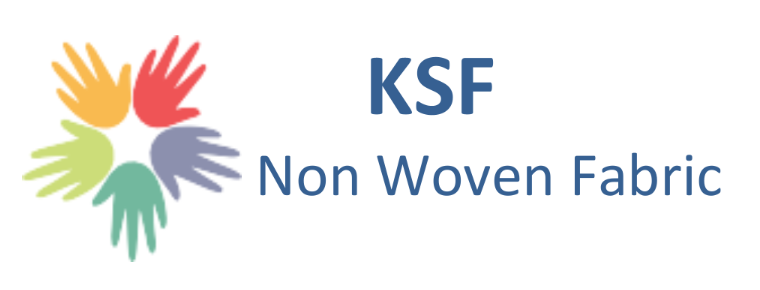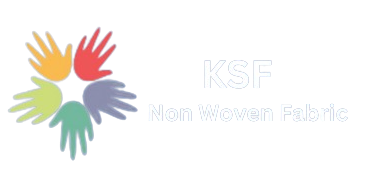Nonwoven fabrics have become integral in various industries due to their versatility, cost-effectiveness, and eco-friendly properties. In this article, we delve into the use of nonwoven fabrics, exploring their types, advantages, applications, environmental impact, innovations, and future trends.
Introduction to Nonwoven Fabrics
Nonwoven fabrics are engineered textiles manufactured by bonding or interlocking fibers together through mechanical, thermal, or chemical processes, rather than weaving or knitting. Unlike traditional fabrics, nonwovens are not formed by yarns or threads but by directly arranging fibers into a web.
Types of Nonwoven Fabrics
Spunbond
Spunbond nonwovens are produced by extruding continuous filaments of thermoplastic polymers, such as polypropylene or polyester, which are then spun and bonded together. This method creates fabrics with excellent strength and durability.
Meltblown
Meltblown nonwovens are made by extruding melted thermoplastic polymers through fine nozzles, forming microfibers that are cooled and collected on a conveyor belt. The random arrangement of fibers results in a fabric with high filtration efficiency and breathability, making it ideal for use in medical masks and filters.
Needle Punch
Needle punch nonwovens are produced by mechanically entangling fibers using barbed needles. This process creates fabrics with varying thickness and density, suitable for applications requiring strength and resilience, such as automotive interiors and geotextiles.
Wetlaid
Wetlaid nonwovens are manufactured by suspending fibers in water and depositing them onto a moving wire mesh, followed by dewatering and bonding. This method produces fabrics with uniform structure and excellent absorbency, making them suitable for hygiene products and wipes.
Advantages of Nonwoven Fabrics
Nonwoven fabrics offer several advantages over traditional textiles:
Versatility
Nonwovens can be engineered to have specific properties, such as absorbency, barrier protection, and breathability, making them suitable for a wide range of applications across various industries.
Cost-effectiveness
The production process of nonwoven fabrics is often more efficient and economical than traditional textile manufacturing methods, resulting in lower production costs and competitive pricing for end products.
Ease of Production
Nonwovens can be manufactured in a continuous process, allowing for high-speed production and rapid scalability to meet market demand.
Eco-friendly Properties
Many nonwoven fabrics are made from recyclable or biodegradable materials, reducing environmental impact and promoting sustainability in the textile industry.
Applications of Nonwoven Fabrics
Nonwoven fabrics are utilized in diverse applications, including:
Medical and Healthcare
Nonwoven medical textiles are used in surgical gowns, drapes, masks, and wound dressings due to their barrier properties, absorbency, and disposability.
Automotive Industry
Nonwoven fabrics are employed in vehicle interiors for carpeting, headliners, door panels, and trunk liners, offering durability, acoustic insulation, and moldability.
Agriculture
Nonwoven agricultural textiles, such as crop covers and mulch mats, help improve crop yields by providing protection against pests, weeds, and adverse weather conditions.
Personal Care Products
Nonwoven materials are integral components of diapers, feminine hygiene products, and wet wipes, offering softness, absorbency, and fluid distribution properties.
Environmental Impact and Sustainability
While nonwoven fabrics offer numerous benefits, their environmental impact has raised concerns:
Biodegradability
Some nonwoven fabrics are made from biodegradable materials, such as natural fibers or biopolymers, which decompose over time, reducing landfill waste.
Recycling Initiatives
Efforts are underway to develop recycling technologies for nonwoven fabrics, enabling the recovery of fibers from post-consumer and post-industrial waste for reuse in new products.
Reduction of Waste
Manufacturers are exploring methods to minimize waste generation during the production of nonwoven fabrics, such as optimizing material usage and implementing closed-loop systems.
Innovations in Nonwoven Fabric Technology
Advancements in nonwoven fabric technology aim to enhance performance and functionality:
Nanotechnology Integration
The integration of nanomaterials into nonwoven fabrics enhances their properties, such as antimicrobial activity, UV resistance, and self-cleaning capabilities.
Enhanced Durability
Innovative bonding techniques and fiber reinforcements improve the durability and strength of nonwoven fabrics, expanding their application potential in demanding environments.
Improved Filtration Properties
Research and development efforts focus on enhancing the filtration efficiency of nonwoven fabrics for applications in air and liquid filtration, addressing emerging environmental and health challenges.
Future Trends and Market Growth
The nonwoven fabric industry is poised for significant growth and innovation:
Increasing Demand
Rising awareness of hygiene standards, coupled with the demand for lightweight and breathable materials, drives the adoption of nonwoven fabrics in various sectors, including healthcare, automotive, and consumer goods.
Emerging Markets
Developing regions, such as Asia-Pacific and Latin America, present lucrative opportunities for nonwoven fabric manufacturers, fueled by urbanization, infrastructure development, and changing consumer preferences.
Technological Advancements
Continued research and development efforts are expected to lead to the introduction of novel materials, processes, and applications, further expanding the versatility and market reach of nonwoven fabrics.
Conclusion
Nonwoven fabrics play a vital role in modern manufacturing, offering versatility, cost-effectiveness, and eco-friendly properties across diverse industries. As technological advancements and market demand drive innovation, the future of nonwoven fabrics promises continued growth and sustainability.
FAQs (Frequently Asked Questions)
- Are nonwoven fabrics recyclable? Nonwoven fabrics made from recyclable materials can be recycled through specialized processes, contributing to waste reduction and environmental conservation.
- What are the primary applications of meltblown nonwovens? Meltblown nonwovens are commonly used in filtration applications, including medical masks, respirators, and air purifiers, due to their high filtration efficiency and breathability.
- How do nonwoven fabrics compare to traditional textiles in terms of production efficiency? Nonwoven fabrics often have a shorter production cycle and require fewer resources compared to traditional textiles, resulting in cost savings and faster time-to-market for manufacturers.
- What role does nanotechnology play in enhancing the properties of nonwoven fabrics? Nanotechnology enables the incorporation of nanoparticles into nonwoven fabrics, imparting additional functionalities such as antimicrobial activity, UV resistance, and enhanced durability.
- What are some emerging trends in the nonwoven fabric industry? Emerging trends in the nonwoven fabric industry include the development of sustainable materials, advancements in recycling technologies, and the integration of smart features for enhanced performance.

